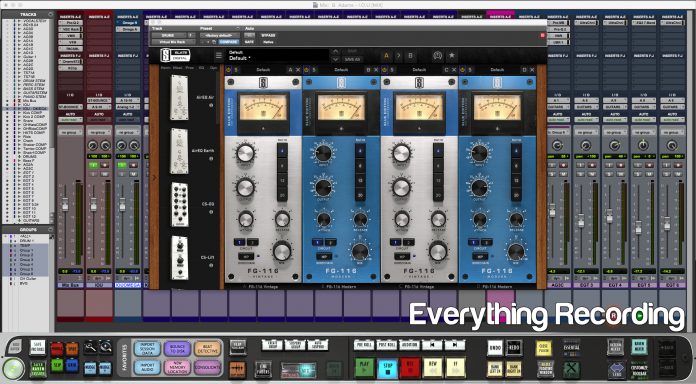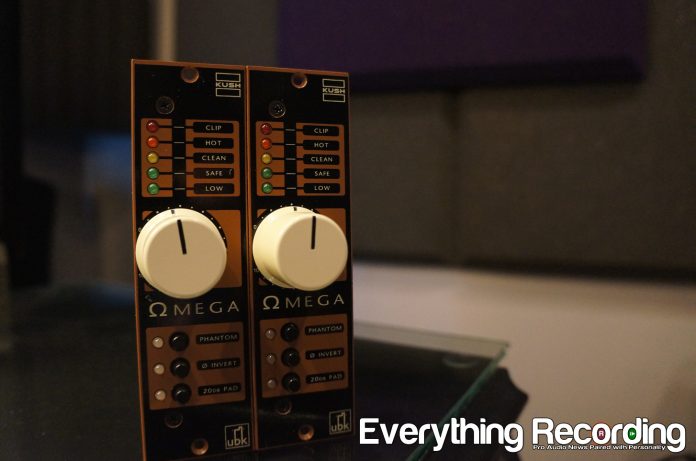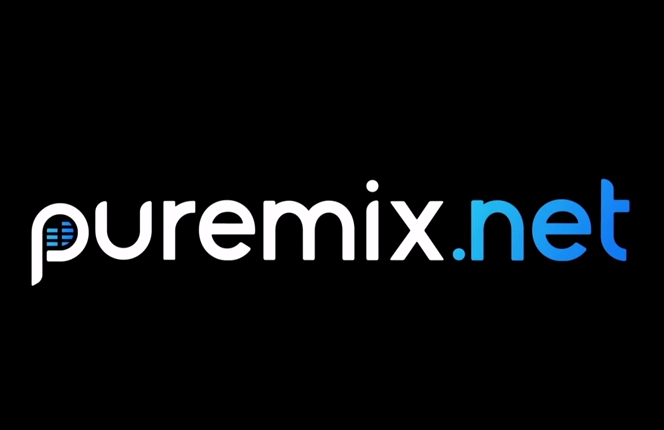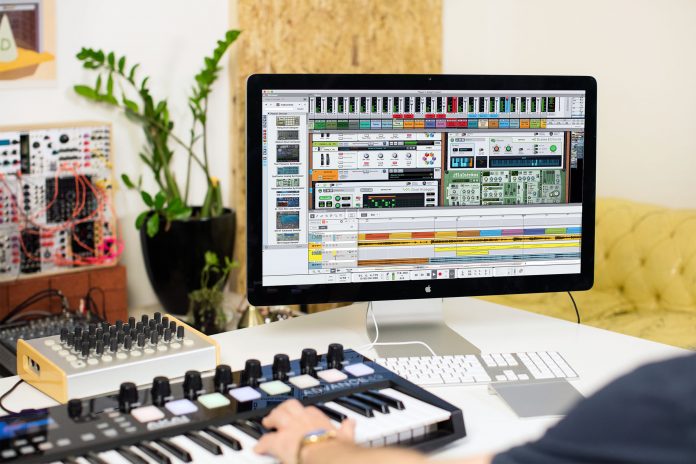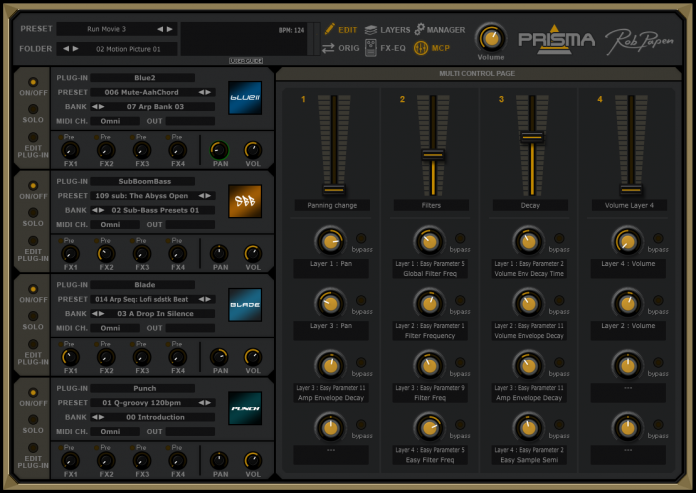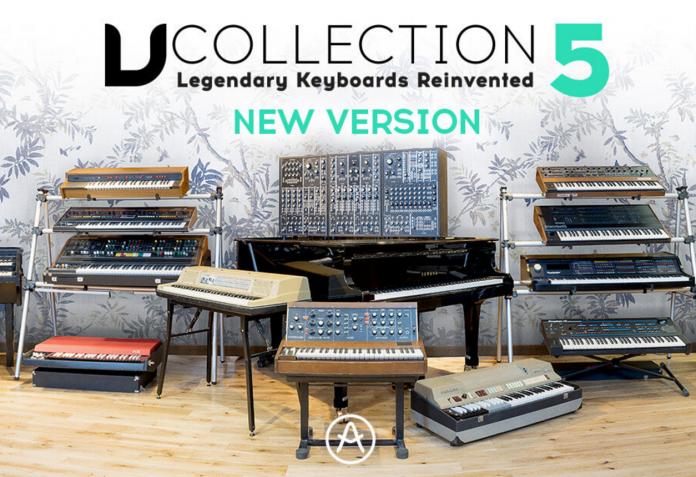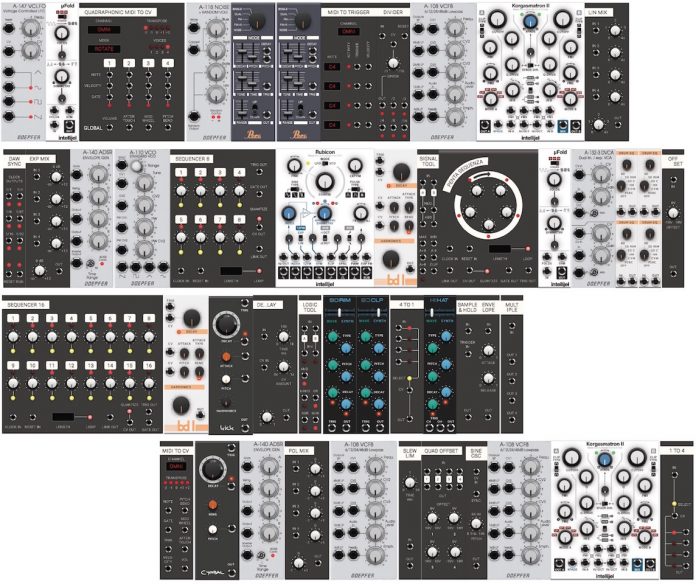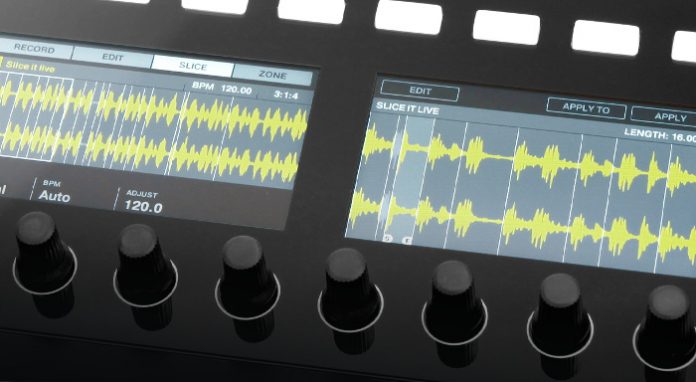We all have multiple speakers in the studio to reference data. We constantly worry about how our mixes will translate and spend precious time exporting, emailing files to ourselves, running to the car, listening on the phone, and repeating until you’ve used up storage space on your email and other devices. It’s an extremely nerve wracking process that needs to happen to ensure audio sounds good across all mediums. What if there were a plugin that models these devices and you could monitor all straight from the comfort of your control room without moving from that ergonomic mesh back chair you dropped $300 on? Audified has come up with a solution with “MixChecker”.
MixChecker is a plugin that goes at the end of your mix buss and emulates different common listening devices for consumers, thus eliminating the need to go on a listening world tour to experience how your track sounds in each situation. It is available in AU, VST, and AAX, for both Mac and PC, and uses iLok for registration. The concept is really straightforward, but is it effective?
The interface, although a little dated looking, is simple – at the top you have your compensation section that will work to help flatten the frequency response for either 5” mixing monitors, 8” mixing monitors, or headphones. This isn’t exact science due to the many different types of monitors and headphones on the market, each having different EQ curves, but it helps. If you are listening through high end monitors it is best to leave this off. To the right of the compensation section is the “Bypass” section which completely disables processing on the plugin. Below the “Compensation” section is the “Simulation” section. This features 12 different types of common everyday devices in which most audio is being played through. You are given the choice of:
Classic Studio Monitor (assuming NS10s)
Classic Cube Monitor (Auratones)
On Ear Headphones
Smartphone speaker
Tablet speaker
Laptop Speaker
Car Audio System
TV Speaker
Micro HiFi
Radio
Desktop Speakers
Earbuds
Audified does no go into the specifics of how this is accomplished but it is assumed that phase shifting, EQ, and some impulse responses are at play to emulate these different types of systems. Simply click on each icon to experience what Audified considers models of each device. That’s pretty much it. So how does it perform while in use?
The smartphone model is great. I ran an A/B comparison by playing a file on my cell phone and on my Pro Tools system using MixChecker on the Cell Phone setting. I am using a set of Focal Solo 6Be speakers so compensation was not being used. Instantly my speakers sounded eerily similar when switching between the phone and MixChecker, almost like the speakers had shrunk. There were times when I would lose track of which was the cell and which was mix checker. The desktop speaker setting was very close to my Logitech speakers I use to check mixes with as well. I found the “Classic Studio” monitor to be helpful in targeting mid range balance issues as well but since I do not own a pair of NS10’s cannot attest to the accuracy of the model. The tablet and laptop speaker settings were OK, but I didn’t find myself using them as much as the other 3 mentioned above.
Upon initially using MixChecker, I found that a few of the models sounded a little off. Upon researching and talking to the folks at Audified, I was informed of something that changed my perspective. Upon using these settings, they may sound lofi and degraded, this is because Audified modeled some of the more “worst case” scenarios. The headphones were cheap stock earbuds that come with cell phones and the car audio system was from a system over 10 years old. I was very skeptical of this explanation but once I actually tracked down an older car and dug out some old earbuds, the models started to line up a little more. This is where I figured out MixChecker is more of a tool to pick out situations where audio quality is not ideal, not on devices people who enjoy high end equipment use.
The only model I didn’t have this experience with was the TV Speaker setting. This model seemed more of a very very old CRT TV which virtually aren’t used anymore. With the quality of audio coming out of TVs these days, the “TV Speaker” model was more of an effect preset of an old TV than the frequency response of today’s flat screens. Although an older TV Speaker can be useful in targeting frequencies, an updated TV Speaker would be helpful to have. Also seeing that a lot of mediums use one speaker, I’d like to see a “mono” selection to better emulate these situations. While we’re on the topic of improvements, I’d also like to see various streaming presets as this would help tremendously with most music going to the cloud. Also, a Jukebox model or an In-Store Sound System would be extremely helpful for bars and retail store references. I’ve been told by Audified that improvements are on the way so hopefully these will show up in future revisions.
Another completely different application MixChecker could be used is as presets during mixing as an effect. It was mentioned the TV Speaker had the effect of an old television – this could be used as a quick preset for a vocal effect. The cell phone could be used in post for editing audio for video as well.
Overall:
What it does do right, it does great. The cell phone, classic studio monitor, and desktop speakers were spot on. This helped by giving accurate perspective with multiple types of speakers. The Car Audio gives a very good picture of some of the less ideal monitoring situations but a modern TV Speaker would have been more helpful as well to hear what music would sound like on commercials, but the current TV Speaker model was a little exaggerated and dated.
Clocking in at $149.00, it’s a little bit of a stretch on price point but since Audified is looking to add improvements, these features could make the product a little more worth the price tag.
For more information, and to purchase, visit https://shop.audified.com/products/mixchecker?variant=20301040967
Review: Audified MixChecker
Review: Slate Digital FG BLUE Series FET Compressors
Oh look, another 1176 emulation! But I have 30 of them INCLUDING the FG-116 already in the Virtual Mix Rack. Why do I need another one? Why should I shell out $200.00 for something I already have?
First off calm down! I’m just a news site. Let’s tackle these questions one at a time because when I got the press release, each of these questions popped in my head. I’m going to take a slightly different approach to this review. Instead of spending time analyzing each aspect of this plugin, then writing, I’m going to review it in print, as I’m working with the plugin. A sort of “live review” if you will.
The FG-116 BLUE Series compressors are modules that work within Slate’s Virtual Mix Rack (Review HERE) and come in two main iterations: Vintage and Modern. Each Vintage version is based off of 2 REV A 1176s – one is a completely original model (circuit 1) while the other unit was refurbished in a way that altered the overall tone (circuit 2). For the Modern version, who knows what was used. I’m sure these models are still loosely based on the original hardware version used in the Vintage model, but Slate decided step outside of the box and create his “ideal” 1176 models. Essentially, the FG-116 BLUE Series contains 4 separate compressors and preamps. The preamp feature is a plus that incorporates the modeled analog circuit by “Shift Clicking” the attack button. This disables compression and allows for the coloration to be used exclusively as an effect. Some of the questions at the beginning of this review are slowly being answered right?
Yes, we know looks mean nothing to a mix, but the interfaces on these models are some of the best looking Slate digital has designed yet. Friends who know nothing about pro audio walk up behind the desk and immediately mention how detailed and sleek these models look. They definitely attract attention and still feature the “random virtual wear and tear per instance”. Try it… Open up 2 Vintage modules and look at how different the scratch marks and wear patterns are for both models. It’s the small things… Each model features the typical 1176 style settings complete with gain reduction meter, input, output, ratio button, attack and release. Slate added several of the custom controls found in other VMR modules with 2 virtual “circuits” to select from, a high pass filter sidechain, and a mix knob to control how much compression is being blended with the signal. Both models feature the exact same controls, but with different colors on the GUI.
FG-116 Vintage:
The Vintage model has been meticulously modeled after two different models of “Blue Stripe” REV A 1176 models. These are selected via the circuit button. Circuit 1 has the standard mid-range centric push that places tracks out front in a mix while solidifying the low mids. This model is built for adding weight and presence to vocal track that won’t sit properly in a mix. Circuit 2 is based on the refurbished model and responds to audio quite differently. This model has more of a “smile EQ” effect with lush lows, tamed mids, and silky highs. Perfect for instruments who need to be heard, but featured.
FG-116 Modern
These two models are the most interesting by far. Both Modern versions feature slower attack times than the typical “fast” and “faster” times on the original units. The output sections have pretty much no transformer saturation, making these models much more clean than the Vintage circuits. These units are made to do exactly what you want an 1176 to do but with a surgical transient approach in mind. Circuit 1 is similar to the same circuit on the Vintage model but with more snap in the high end. The slower attack allows for more transient material to sneak through before getting squashed. Circuit 2 has the same characteristics as the Vintage circuit 2, but with a punchier low end and a slight more push in the high end. This model is made to be the most versatile of the models and can be used on material that an 1176 usually doesn’t fare well on, like a mix buss.
Let’s revisit the questions we all had at the beginning.
Question 1: Why do I need another 1176 plugin?
Answer: Truth is you don’t. Pretty much any 1176 emulation you have in your arsenal up until this point is obsolete. You only need this one. I’m not overhyping when I say you can uninstall any other emulation of an 1176 and you wouldn’t miss any of them. Slate has not made 4 versions that sound even remotely similar to each other. These models all have drastic, audible differences. Each model contains a personality all its own. I used each model on the same content, with the same settings for the very same friends that do not know anything about mixing and liked the interface and even they could tell a difference between Vintage and Modern. They did have a little more trouble trouble between the individual model’s circuits but that’s to be expected with untrained ears. The difference to the trained ear is still noticeable. If presence is needed, Circuit 1 – if glue is needed, Circuit 2.
Question 2: Why should I shell out $200.00 for something I already have?
Answer: Again, you don’t have to. At the time of this review, Slate Digital offers access to all plugins with the “Everything Bundle” for either $24.99 a month or $274.00 for a year. That is not only access to the FG-76 BLUE Series, but every single plugin they offer. Even if you want to own them outright, $199 ($149 at time of review) is a steal. Go on over the Waves and see how much the CLA76 is. That’s $250 for only 2 versions. BLUE Series has 4 different compressors. That very same $250 has you well on your way to a year of every Slate plugin that exists and will exist in the future. I’d say the value for money is heavily in BLUE’s favor.
These plugins are the perfect balance of what you love about an 1176 and what you want in an 1176. The mix knob makes dialing in just the right amount of compression quick and simple. These plugins are a match made in heaven for drums. I would put the Modern circuit 1 on drum busses and would bypass and immediately feel like a whole other set of drums were being played. Vocals thrive on Vintage circuit 1 and just try putting Modern 2 on your mix buss with about 25% blend. Thank me later. I even would just use the Vintage circuits without compression on electric guitar tracks for added weight. I could go on about all the uses.
Look, I’ll be completely honest. I snicker from time to time at Slate’s videos for these plugins. I think we all display a slight virtual eye roll when they come on, but the product stands up to all of the hype. He knows how to make plugins and prices them within anyone’s reach. I wanted to have something remotely negative to say about these plugins but couldn’t. I really don’t want to sound like I’m overhyping or some sort of Fan boy but I’m not going to go out of my way to try to appear cynical. My only requests are that an external sidechain could be used in VMR as well as an auto release feature. I would also like an “All Buttons In” mode but word on the street is that Slate is designing “Monster”, a plugin that will do this and more, and it will be FREE.
As with all things Slate, don’t believe me? Go get a trial. For the price, you won’t get a better emulation of the Holy Grail of 1176s – let alone a modern tweaked out version.
For more information visit http://www.slatedigital.com/products/fg-116-blue-fet-compressors/
Review: Kush Audio Omega and Transformer Plugins
What if you could have the power to decide what type of preamp you want to track with long after you’ve recorded the audio? Who wouldn’t want to be able to choose between, a transformerless preamp, a Neve, or API weeks after the guitar player left? This has long been the dream of engineers who have “recorders remorse” after using the flavor of the month pre and weeks later regretting it all together. Those days can now be behind you.
Kush has returned with a new piece of hardware and accompanying software that essentially creates a multiverse of analog / digital goodness. Omega is a 500 series preamp that can work in conjunction with Kush Audio Transformer plugins to give the character and tone of a couple of staples in the vintage gear world (with more “Transformers” coming down the pipeline). On the surface it would appear this is a symbiotic duo, but even though each have been designed to work in tandem, they can also function completely independent of each other. Let’s peel back the layers of Omega together shall we?
Let’s start with the preamp. Omega has been bathed in all of the lush brown 70’s glory that makes Kush Audio hardware stand out from the crowd. This 500 series module contains very clearly labeled metering, one big knob, and a few buttons – no extraneous controls. Below the volume knob is a Phantom Power, Phase Button, and a 20dB Pad. One thing I did miss was a high pass filter. Although software can do this, there’s something about a fine tuned resonant “butterworth” filter that can both cook and clean the signal at the same time, but maybe that’s a subtle hint from UBK that this preamp would go good together with an Electra. One thing that stands out is how the metering section coaches the user as to the impact of the source audio on the preamp with clearly labeled “Low, Safe, Clean, Hot, and Clip”.
Omega is transformerless in order to grab as much unaffected sonic information as possible. Apart from giving a somewhat neutral, open sound, this supplies the “Transformer Plugins” a larger, clearer swath of data to work with to complete their intended task (which we will get into later). The transistor amp inside of Omega is the very same one featured in Gregory Scott’s highly modified VCA built into Tweaker. There is no DSP built into the preamp and the Omega doesn’t act as a dongle for the Transformer plugins. Omega is simply all analog.
This preamp has quite a bit of headroom too (around 75 to 80dB which is a TON) and can be pushed pretty hard without blowing out your signal. Judging by its creator, it is suspected that this pre was built to be very “Ribbon Mic Friendly” and is designed to handle transients very well with a somewhat neutral, open tone. Omega can actually be used on its own without any plugins to achieve was Kush Audio has considered optimal signal path. This preamp has been tuned out of the box to sit easily in a mix on its own but how does a neutral preamp have the ability to sound like a Neve? This is where the Transformer Plugins come in to play.
These plugins are available in AU, VST, and AAX and are built with certain preamps in mind. The idea behind designing plugins that interact with hardware is to track with a moderate amount of gain on Omega, and without clipping your converters, send this signal to your DAW and ultimately into a track with a Transformer plugin instantiated. At this point, the Transformer plugin takes the data optimized by Omega, and because the software was built with the design of the Omega preamp circuit in mind, degrades the signal and removes precise information similar to how analog gear signal path translates sound in the form of electricity. By removing key snippets of data using Kush Audio’s “Transient Harmonic Coupling” or “THC” (get it?), different transformers from different pieces of gear can be “modeled”. Once modeled, the affect of the “degradation” of the signal can be controlled and virtually “pushed” into saturation.
The plugin interface is very simple, the knob in the center controls the intensity of the “transformer” effect, the “phase” button will flip the polarity, and the -20dB button is a pad that will attenuate the input signal, and an output slider to trim the signal path on the way out. Any time a moderate amount of “saturation” is occurring within the plugin, the two green LEDs will illuminate and work as a visual guide. This doesn’t mean that the plugin isn’t in play when the lights aren’t flashing. Even with the intensity all the way down, Transformer is influencing the signal. When either the phase or the -20db button is engaged, the LED next to the control will illuminate green. The -20db button can be a bit misleading at first as this button doesn’t pad the output signal but almost works as a “sidechain” control for the intensity, thus allowing you to dial in just the right amount of flavor with gain compensation on the other side to volume match the signal. One issue I do have with the plugins is the amount of volume boost simply instantiating the plugin. This usually entails immediately pulling back the output slider to volume match the source audio with the affected. Just default the plugin to dial back the Output slider -3dB to account for the gain if volume becomes an issue.
At the time of the release of this review there are two Transformer Plugins: Model A and Model N but more are expected to come in the future. These plugins do not have to work in tandem with the Omega preamp either. Just about any source audio can benefit from the Transformer’s vibe, even on classic analog gear; but keep in mind – to experience the full power of the models, the Omega preamp is needed to represent the true emulation of the target gear being modeled. The difference between the plugin being used with a preamp other than Omega is a whole other experience.
Omega Model A is based off of the sound of a Vintage API and is designed to bring source audio front and center with its clarity and punch. Omega Model N is all Neve. This model is designed with the lush, warm, heavy tone in mind that stays right where it needs to in a mix. Each Transformer Model gives very apparent results and neither sounds close to the other. Some emulations of these two pieces of gear from other companies sound pretty similar, not these two.
The concept and technical jargon is impressive no doubt, but words and ideas are just that. Omega backs up its bark with gusto. This is combo is the real deal. I tested Omega with the Model N Transformer up against my own Neve 1272 racked preamp and Omega was every bit of Neve as the original. I had to dial in the intensities just right to match exactly what I was hearing with the 1272, but as I was attempting this, I noticed myself leaning more towards the Omega’s tone. The intensity knob not only gives an option to sound like the Neve, it also can expand the vibe into a more enhanced Neve. Nuances can be fine tuned with the Transformer as opposed to just having a volume knob. Although I did not have an API preamp, I have worked with API quite a bit and Omega captures exactly what you want when you reach for an API. Tracks jump right out in front without being in the way. The transients pop and that analog sheen grabs you through the speakers. It’s crazy that this is all being gleaned from a fairly neutral preamp.
Having access to vintage preamps is a huge plus and kudos to Kush Audio for developing this, but honestly, on a lot of tracks, I ended up using the preamp by itself. It somehow is transparent with character at the same time. I put it up against my Millennia and preferred Omega almost every time. The tone hits the spot on almost every track from drums to vocals and everything in between. Don’t get me wrong, when I wanted attitude on a track, I would throw a transformer on, but there is really something special and unique about the preamp on its own. It is not simply a conduit for the plugins to work.
I ran everything through the Omega preamp. Acoustic guitars magically need less cleanup on EQ, electric guitars thrive on the open character, and virtual synths magically grow circuits and vintage vibe. Any studio tracking drums need a pair of these no questions asked, scratch that – anyone who runs their audio through a mix buss needs two of these. Coming in a $549.00, two of these are the equivalent of 6 separate preamps with the Transformer plugins – with more Transformers coming down the pike. The Transformers are only $29.00 a piece so even if you do not buy an Omega 500, these plugins will still add plenty of flavor to your tracks and are a steal.
One of the factors Omega has going for it is that it subtly adds character while allowing your microphones’ voice to come through, thus giving you a broad palette to work with. The Omega preamp is truly a balance of originality and subtlety – The Omega with Transformer plugins is a dead on replica of two great pieces of hardware.
What we are left with here is a “have your cake and eat it too”, a situation rarely accomplished by hardware and plugin manufacturers. There now exists a system that will allow you to track clean and swap preamps during mixing without running out of your DAW. It just took a company that makes both masterfully to put all of the pieces together. Give me a pair of these and a pair of Lauten Edens (Review HERE) and there is no situation I can’t handle. Well I’m now halfway there with a pair of Omegas in my rack. Bring it on world.
For more information visit, http://www.thehouseofkush.com/#!analog/cy7t
PureMix Summer Sale
– HD Video player, we’re upgrading all of our videos to 1080p so we now have the highest possible quality audio and video.– Synth 101 and 102 tutorials with Fab explaining the concepts that are found in every analog or digital synthesizer.– The Lifeboats series where our pureMix mentors each mix the same song, a unique chance for people to objectively compare mixing styles between our Grammy winning mix engineers– Then in July we have a full length mixing tutorial with Mark Needham mixing Imagine Dragons song “It’s Time”And of course our summer sale is happening too which is over $100 off yearly Pro Memberships.
Propellerhead Releases Version 9
Propellerhead has released 8 previous version of their very popular DAW. Today version 9 comes out with an array of new features. Users who have purchased Reason after May 1 are eligible for a free upgrade.
Stockholm, Sweden, June 21, 2016 – Propellerhead Software today announced that Reason 9 software is now available for purchase. Reason 9 builds on the award-winning Reason platform by introducing a host of new devices, sounds and creative tools that inspire music makers to create more and better music from initial concept to a polished song.
“We’ve seen unprecedented interest in Reason 9 since the beta launched last month, with over 70,000 viewers tuning in to watch our Facebook live stream events,” said Mattias Häggström Gerdt, Propellerhead Product Marketing Manager. “Now we’re excited to make this latest version available to everyone. With new Player devices, new sounds, Pitch Edit, numerous workflow enhancements, and the addition of our popular Pulsar dual-channel LFO synth, Reason 9 is the best version yet for taking musical ideas from inspiration to completion.”
Reason 9 introduces three Player devices that instantly transform any MIDI input into compelling music. Note Echo creates rhythmic, pitched MIDI delays for melodies, drum rolls and more. Scales & Chords turns simple melodies into beautiful harmonies and chords so you can stay focused on the music making. Transpose notes to a selected scale and automatically generate chords for your song, no music theory required. Dual Arpeggio transforms chords into intricate and inspiring rhythms. From classic up-and-down to polyphonic and polyrhythmic, Dual Arpeggio breathes new life into any instrument in your Reason rack.
Reason’s new Pitch Edit mode helps you produce flawless vocals. Fix out-of-tune notes, adjust vibrato, change your timing, create new melodies from your recording, change the dynamics, and more. Audio to MIDI lets you convert your vocals to MIDI notes for endless sound manipulation possibilities.
Reason 9 also comes with 1000 new cutting-edge sounds to ignite your creativity. Whether you make chart-topping anthems or the sound of the underground, Reason’s new sound bank will take your music to the next level. The legendary Reason rack is also enhanced with key workflow improvements and darker theme options, perfect for late-night studio sessions.
Reason 9 also now includes the popular Pulsar dual channel LFO – previously available as a Rack Extension ($49) via the Propellerhead shop. Use Pulsar to introduce variation to your sounds, create entirely new ones using its advanced and flexible modulation, or load up any of the masterfully crafted presets for instant inspiration.
Pricing and availability
Reason 9 is available as a direct download from Propellerhead’s website or from an authorized dealer.
Reason 9 will be available for purchase worldwide on June 21, 2016, at the following suggested retail pricing:
Reason 9 EUR €405 / USD $449
Reason Essentials 9 EUR €120 / USD $129
Reason 9 Upgrade (from any previous Reason version) EUR €129 / USD $129
For more information, visit https://www.propellerheads.se/reason
Rob Papen Releases PRISMA to the Masses
Rob Papen has made countless virtual instruments so why not be able to combine multiple virtual synths in one window? PRISMA handles this with ease and allows for 4 virtual instruments to be stacked in one plugin window.
ECHT, THE NETHERLANDS: having blown musical minds when first being showcased as a beta-test version by namesake company Managing Director Rob Papen at The NAMM Show 2016, January 21-24 in Anaheim, California, virtual instrument and effects plug-in developer Rob Papen Soundware is proud to announce availability of PRISMA, an advanced utility plug-in for Mac (32- and 64-bit, AAX, AU, and VST for Mac OS X 10.6 or higher) and PC (32- and 64-bit VST for Windows Vista, 7, 8, and 10) that allows any Rob Papen product owner to stack (up to four) of their virtual instruments — including instances of the same PLUG-IN or otherwise — as a single so-called ‘prismatic’ sound source, as of June 2…
Who better to make the formal introductions, then, than professional sound designer and progressive product ‘dreamer’ par excellence Rob Papen: “PRISMA provides the Rob Papen ‘sound garden’ with ways of providing terrific tone colours by combining these into a single ‘prismatic’ sound source,” he starts, somewhat poetically. “Powerfully, PRISMA stores those stacked software instruments and all their respective settings as a single preset. Of course, there’s a whole lot more to this than might first meet the eye since users can open each single software instrument individually and easily edit and creatively combine it wonderfully with any other stacked software instruments from Rob Papen to create a whole new range of PRISMA sounds!”
Creating a whole range of PRISMA sounds comes quickly courtesy of its all-new MCP (MULTI CONTROL PAGE) — not shown at NAMM. Now users can quickly control and change the sound of each Layer (corresponding to the PLUG-IN being stacked) using four faders — for instance, changing the Filter Frequency of all four stacked virtual instruments or dynamically changing the Pan (panning) of a single Layer. All are achievable within the MCP that’s as easy on the eye as it is easy to use. Users jumping straight into playing around with PRISMA presets and associated settings within the MCP will be amazed at just how powerful this page can be, producing radical results in a matter of seconds!
Speaking of which, PRISMA presently offers up 345 professionally-programmed presets, including ‘super pads’ suited to film scores and games music, EDM (Electronic Dance Music) lead and stack sounds, and much more besides. But more are always being added — as is the way with Rob Papen, a company that rests its reputation on superlative sound design! Which is precisely what PRISMA is all about, making it a no-brainer for owners of Rob Papen’s varied virtual instruments. Therein lies a question: what happens if a user loads a PRISMA preset that includes a Rob Papen virtual instrument that they do not own? Of course, Rob Papen would not leave them out in the cold; the Layer that should be played by the ‘missing’ virtual instrument simply would not sound, but any other owned Rob Papen virtual instruments used in that PRISMA preset would still be loaded as needed.
Needless to say, PRISMA works wonders for owners of eXplorer-III, The Complete Rob Papen Synth & Effect Collection, combining all of the company’s multi-award-winning Mac- and PC-compatible software instruments — including the relatively recently-released RAW soft synth specialising in ‘distorted’ sounds specifically suited to EDM and beyond — and also all of its critically-acclaimed effects plug-ins into an attractively-priced performance and sound design dream bundle to die for!
Fortunately, no matter how many Rob Papen virtual instruments are already owned, creative combinations within PRISMA are almost limitless. Let’s try picturing a PRISMA preset with a pad from BLUE-II — cleverly combining FM (Frequency Modulation) and subtractive synthesis with Phase Distortion and wave-shaping synthesis to create self-styled ‘Crossfusion Synthesis’ — together with an arpeggiated sound, say, from Predator — ‘phat’ analogue-sounding soft synth with killer presets and first-class features — combined with a cutting-edge sound from Blade — representing the cutting-edge of soft synth development — and adding a groove from Punch… picture perfect! PRISMA also has four top-quality FX on board, allowing users to bypass the individual virtual instruments’ inbuilt effects to save on computer resources, ready for building those picture perfect PRISMA sounds!
Still better, PRISMA is available for any Rob Papen user to download for free! Simply stack any already-owned Rob Papen virtual instruments to use (or create new) PRISMA presets using those virtual instruments at their disposal, even if it’s just a case of combining multiple instances of BLUE-II, Predator, or, indeed, any other Rob Papen product. Either way, welcome to the wonderful-sounding world of PRISMA!
To download PRISMA for free, simply login to your Rob Papen account at RobPapen.com, go to My Products and select Get deal #2. For more in-depth information, please visit the dedicated PRISMA product webpage here: http://www.robpapen.com/prisma.html
Watch several Rob Papen PRISMA videos here: https://www.youtube.com/playlist?list=PLBWOOO5zeHgdjEZebpRbIxAU-RXJijV8r
Since it makes sense to own all of Rob Papen’s virtual instruments when using PRISMA, the company currently has a number of discount deals available for upgrading to eXplorer-III, its all-encompassing software bundle that now includes PRISMA as standard, bringing its total product count to 15; alternatively, eXplorer-III itself is available at a promotional price of €499.00 EUR (including VAT/tax)/$499.00 USD until the end of June 2016. (Thereafter, its RRP returns to €585.00 EUR/$599.00 USD, which still represents a significant cost saving of over 50% when compared to separately purchasing each and every Rob Papen virtual instrument and effects plug-in included!)
Sound Magic Steinway Virtual Piano Plugin
Everyone wants a Steinway in their tracking room, but most of us don’t have the money or square footage to own one. Luckily, Sound Magic have modeled the best of the best Steinway Grand Pianos for us.
BEIJING, CHINA: leading virtual piano software developer Sound Magic is proud to announce availability of Mega Steinway Special Edition — shipping a stunning collection of next-generation modelled virtual piano plug-ins based on eight legendary Steinway pianos on a custom flash drive — as of June 17…
As implied by name, Mega Steinway Special Edition is a magical musical collection of virtual instruments based on eight legendary pianos occupying a significant place in the hallowed history of prominent piano company Steinway, well known for making high-quality pianos (famed for their ‘Steinway singing tone’) and also for inventions within the area of piano development — namely, Steinway No. 483, modelled on the first piano made and sold by Steinway & Sons in the US — so called since founder Heinrich Engelhard Steinweg (later known as Henry R. Steinway) had previously built 482 pianos in Germany before emigrating Stateside — as the earliest example of the Steinway sound (and now displayed at the Metropolitan Museum of Art in New York City); Anton Rubinstein’s Steinway, modelled on the piano played by revered Russian pianist, composer, and conductor Anton Rubinstein during his US tour during the 1872-73 season at the behest of Steinway & Sons, showcasing the 19th Century Steinway sound (which was already well on its way to becoming world famous by that time); 1927 Vintage Steinway D, modelled on a flagship concert grand piano built in 1927, representing the early 20th Century Steinway sound; Horowitz Steinway, modelled on the CD 443 — arguably the most legendary grand piano of all time, much loved by Russian-born American classical pianist and composer Vladimir Horowitz, representing the late 20th Century Steinway sound; Lang Lang’s Modern Steinway, modelled on the Steinway grand piano used in recent years by Chinese concert pianist par excellence Lang Lang, representing the latest Steinway sound in the early 21st Century; Steinway B, modelled on the best-selling grand piano, widely used as a perfect practice piano by many young musicians; Boston Home Upright, modelled on Steinway’s mid-level market budget brand, representing the most familiar-sounding upright piano in the world; and Duke Ellington Edition Upright, modelling the upright piano once played by big-band jazz originator Duke Ellington, which has a special Steinway sound all of its own.
Overcoming some serious obstacles during its three-year development, such as not being able to fully sample all 88 keys on some original instruments due to their current condition, Mega Steinway Special Edition’s aim is true, thanks in no small part to Sound Magic’s proprietary Neo Piano Hybrid Modelling Engine that combines the authenticity of sampling with the playability of a modelled piano — the best of both worlds, in other words, making for a virtual piano experience that has to be tried to be believed! At its core is an intelligent analysis system that evaluates a MIDI track or performance to determine the optimum balance between RAM (Random Access Memory) and DFD (Direct From Disk) usage. Using an older computer with low RAM? DFD works well. Using a high-performance 64-bit system with plenty of RAM to play with? Play the virtual instrument totally from RAM. Either way, the new Neo Piano Hybrid Modelling Engine has been totally redesigned with far less CPU (Central Processing Unit) consumption than before — around a tenth of the previous version — and also offers the best DFD performance possible (15mb/s requirement for hard disk speed, which is around a tenth of the capability of an average modern hard drive, and even less for a Solid State Drive, minimising the possibility of glitches and pops due to drive-reading issues). In all cases sound quality remains at the highest level.
Lest we forget, standard sampled piano sounds are always static with no interaction between the strings while playing, but the Neo Piano Hybrid Modelling Engine recreates those ethereal harmonic changes, generating subtle sympathetic resonances based on the notes being played at any given moment. In the case of Mega Steinway Special Edition, Sound Magic successfully captured the harmonics for all eight pianos — 15 harmonics per piano, no less, and built mathematical models for each piano based on this valuable information, using the Neo Piano Hybrid Modelling Engine to shape the timbre and dynamics to best fit the model. Moreover, the new user-defined damping system precisely emulates real damper behaviour, so users can decide whether they want to play a ‘tight’ brand-new piano, a typical bedded-in piano, or a ‘loose’ well-worn piano. Another major breakthrough is the resonance engine. Every grand piano has a large soundboard reflecting sound that then resonates with the piano’s wooden body. This is a continuous process and makes each and every note sound unique. In order to simulate this behaviour, Sound Magic first captures multi-angle IRs (Impulse Responses) from the soundboard, then applies groundbreaking technology to convert those IRs into resonance engine algorithms. In turn, this results in an amazing concert hall sound reproduction full of life! All told, then, there are almost 40 user-adjustable controls — lift the lid, alter the dampers, change the velocity response, apply a ‘style’ or resonance, adjust the player/audience perspective… the combination of options is truly astounding!
Apply all of this to Mega Steinway Special Edition and what have you got? Generally speaking, this comprehensive and detailed piano collection will leave users feeling that they are experiencing the development of Steinway pianos with a better understanding of the true meaning of the Steinway sound. You can clearly hear the improved dynamics from the 19th Century to the early 21st Century while discovering how the timbre changes throughout 160 years’ worth of Steinway’s hallowed history. However, at a more personal level, Mega Steinway Special Edition may even enable users to add a unique ‘Steinway singing tone’ to their own music. Make your own history while experiencing Steinway’s history!
Mega Steinway Special Edition is available to purchase as a custom flash drive featuring eight next-generation modelled virtual piano plug-ins (VST and AU 32- and 64-bit, as well as AAX 64-bit for Mac OS X and Windows) for $399 USD/€349 EURO/£240 GBP from here: http://www.supremepiano.com/megasteinway.html
Arturia Updates V Collection 5
Arturia have listened to the users and updated the new V Collection 5 to reflect requested features.
Arturia roll out an essential update for their award-winning V Collection 5.
The first software update to Arturia’s V Collection 5 – the award-winning bundle of pristinely modelled vintage keyboards – has now been released. Arturia’s team of dedicated programmers and engineers have listened to the user community and have improved the software based on their suggestions.
More of a subtle ‘under the hood’ update than a total revamp, the enhancements improve general stability and fix many of the small bugs that had been reported since the collection was released. The update can be downloaded via the ASC (Arturia Software Centre) and installation is simple & straightforward.
For more information visit https://www.arturia.com/products/analog-classics/v-collection/overview
Softube Modular Synth
Softube makes plugins right (See reviews on Dynamite, TubeTech Classic Channel, TSAR Reverb, and Drawmer S73) so why would a synth be any different. This isn’t your typical soft-synth, Modular features highly customizable sections for infinite possibilities in both standalone and plugin versions.
LINKÖPING, SWEDEN: high-end plug-in specialist Softube is proud to announce availability of Modular as of June 15…
Modular — Eurorack For Everyone
Introducing Modular: the first truly expandable software modular system that looks, works, and sounds exactly like its hardware counterparts.
A Modular Synth For The Future
Softube’s award-winning modeling experts have combined their talents with the legendary Eurorack inventors at Doepfer and the top minds at powerhouses like Intellijel. With intricate measuring and circuit modeling, they’ve developed authentic emulations of original hardware that are as close to hardware as you can get.
Infinitely Expandable
Once you start customizing, you won’t want to stop — indulge your cool creativity, picking and choosing modules as you go, with new emulations from top hardware brands being released on a regular basis.
Expansive For Experts, Easy For Beginners
Both as an effect and as an instrument, Modular is simple to use, with a massive preset library and clever Utility modules. User- definable Performance modules collect the most important settings presented in a single patch. For the synth pro, Modular is completely compatible with existing hardware, infinitely expanding your creative possibilities.
In short:
Modular is a cross-platform modular synthesizer plug-in standard that features authorized emulations of modules from well-known hardware Eurorack brands.
True dynamic circuit emulation — looks, functions, and sounds like its hardware counterparts.
Basic system contains six authorized Doepfer modules (A-110-1 VCO, A-108 VCF, A-132-3 Dual VCA, A-140 ADSR, A-118
Noise/Random, A-147 VCLFO).
Basic system also contains over 20 Utility modules (such as MIDI to CV/gate, mixers, slew, sample & hold, switches,
multiples, delay, offset, sequencers, clock dividers, logic and signal tools, as well as a polyphonic MIDI to CV/gate module).
Additional authorized emulations from Intellijel are available as add-ons (uFold II, Korgasmatron II, Rubicon). Many more modules from other quality hardware Eurorack vendors to be released.
Simple design of your own interaction layout with the Performance modules in classic synthesizer style.
Softube Heartbeat drum channels and EQ can be used as separate modules for owners of Heartbeat.
More than 200 quality presets included, covering a huge range of styles and sounds.
Can be used both as an effect and as an instrument for your DAW and integrates beautifully with your hardware Eurorack modular.
High internal sample rate within system enables true feedback.
Price: (intro: $75) Regular $99)
Find out more at: http://www.softube.com/index.php?id=modular
Native Instruments Maschine Updates 2.4.5
Maschine 2.0 has another update that allows for manual slicing of content.
Native Instruments releases free MASCHINE 2.4.5 Software Update
Berlin, June 15, 2016 – Native Instruments today released the latest free update for their acclaimed MASCHINE family of production tools. The MASCHINE 2.4.5 software provides a new set of features for working with samples within the MASCHINE software. Additional improvements include new ways to work within the Scene paradigm in MASCHINE, new options for audio export, default plug-in settings and more. The MASCHINE 2.4.5 software update is free for all owners of the MASCHINE 2 software and is available now via Service Center.
MASCHINE’s latest update includes a new option for working with samples in Manual slicing mode. Users can now insert slice points on MASCHINE’s pads while the sample is playing – a fast and intuitive way to begin the process of turning a sampled piece of audio into an original composition. A new Variable Scene Length feature allows Scene lengths to be set independent of the length of patterns, making polyrhythms easier to create and freeing producers from extending a pattern just to fit the scene it resides in. Internal plug-in settings are now savable as defaults, accelerating workflow by instantly loading with popular settings defined by the user.
In addition to these primary improvements, MASCHINE 2.4.5 also features the ability to export Scenes as audio, to export audio as lossless .AIFF files and browsing by product groups – especially useful when searching for third-party plug-ins using the Native Kontrol Standard® (NKS) file format.
Additional information the free MASCHINE 2.4.5 software update is available at:
www.native-instruments.com/new-in-maschine




